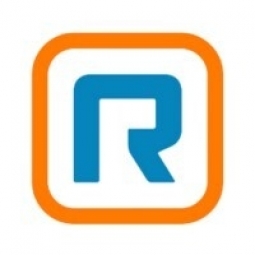Technology Category
- Infrastructure as a Service (IaaS) - Cloud Middleware & Microservices
- Networks & Connectivity - 5G
Applicable Industries
- Cement
- Equipment & Machinery
Applicable Functions
- Sales & Marketing
Use Cases
- Real-Time Location System (RTLS)
- Track & Trace of Assets
Services
- System Integration
About The Customer
SEA Media is a social media marketing firm founded in 2013 by Sara Moore. The company provides small business customers with a full range of digital services, including web design, SEO, and online advertising. However, SEA Media's specialty lies in helping its clients attract customers and build relationships on social networks. The company uses its proven social media sales process, C.L.U.E.™, to help clients build relationships, create engagement, and spark conversations on key social media platforms. SEA Media also serves as a vendor to larger digital agencies that value its disciplined process for social marketing, sales, and customer engagement. The company is a distributed organization with team members working from home offices in various locations.
The Challenge
SEA Media, a social media marketing firm, was on the brink of a significant growth phase in mid-2015. The CEO, Sara Moore, was keen on positioning the company for this growth and ensuring it could handle the influx of business. However, she found herself micromanaging too much, a practice she realized would soon become unsustainable. The company needed a solution that would keep all team members, who were distributed across various locations, in close communication and aware of each other's tasks. The firm also needed to make its processes more disciplined to ensure all tasks were completed without fail, and the quality of work remained impressive to clients. Before choosing RingCentral Glip, Moore considered several other team messaging and collaboration tools.
The Solution
SEA Media chose RingCentral Glip as it provided more of the team productivity features needed in one package. Glip offered an efficient alternative to email communication, organizing all important work messages and shared files into focused team conversations. It also allowed for real-time connection through Glip Video Chat, which facilitated face-to-face meetings and screen sharing among the distributed team. Glip made creating tasks and events on the team calendar as easy as sending a message. Moore also organized her project teams and mapped processes into Glip to maximize its value. Tasks for clients were color-coded for easy tracking. Guest accounts were provided to clients to facilitate collaboration. Glip's Zapier integration was used for automated notifications based on events in other cloud services. The Glip Notes tool was used for sharing and inviting feedback on documents, and the Glip interactive viewer for images was used for marking up images.
Operational Impact
Quantitative Benefit

Case Study missing?
Start adding your own!
Register with your work email and create a new case study profile for your business.
Related Case Studies.

Case Study
Smart Water Filtration Systems
Before working with Ayla Networks, Ozner was already using cloud connectivity to identify and solve water-filtration system malfunctions as well as to monitor filter cartridges for replacements.But, in June 2015, Ozner executives talked with Ayla about how the company might further improve its water systems with IoT technology. They liked what they heard from Ayla, but the executives needed to be sure that Ayla’s Agile IoT Platform provided the security and reliability Ozner required.

Case Study
IoT enabled Fleet Management with MindSphere
In view of growing competition, Gämmerler had a strong need to remain competitive via process optimization, reliability and gentle handling of printed products, even at highest press speeds. In addition, a digitalization initiative also included developing a key differentiation via data-driven services offers.

Case Study
Predictive Maintenance for Industrial Chillers
For global leaders in the industrial chiller manufacturing, reliability of the entire production process is of the utmost importance. Chillers are refrigeration systems that produce ice water to provide cooling for a process or industrial application. One of those leaders sought a way to respond to asset performance issues, even before they occur. The intelligence to guarantee maximum reliability of cooling devices is embedded (pre-alarming). A pre-alarming phase means that the cooling device still works, but symptoms may appear, telling manufacturers that a failure is likely to occur in the near future. Chillers who are not internet connected at that moment, provide little insight in this pre-alarming phase.

Case Study
Premium Appliance Producer Innovates with Internet of Everything
Sub-Zero faced the largest product launch in the company’s history:It wanted to launch 60 new products as scheduled while simultaneously opening a new “greenfield” production facility, yet still adhering to stringent quality requirements and manage issues from new supply-chain partners. A the same time, it wanted to increase staff productivity time and collaboration while reducing travel and costs.

Case Study
System 800xA at Indian Cement Plants
Chettinad Cement recognized that further efficiencies could be achieved in its cement manufacturing process. It looked to investing in comprehensive operational and control technologies to manage and derive productivity and energy efficiency gains from the assets on Line 2, their second plant in India.

Case Study
Integration of PLC with IoT for Bosch Rexroth
The application arises from the need to monitor and anticipate the problems of one or more machines managed by a PLC. These problems, often resulting from the accumulation over time of small discrepancies, require, when they occur, ex post technical operations maintenance.







